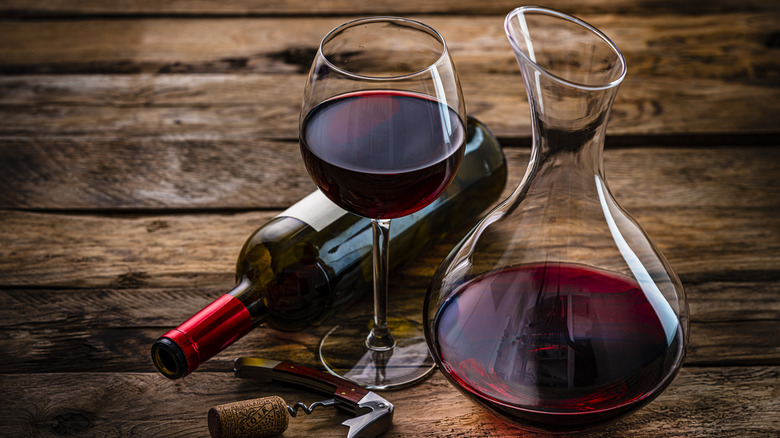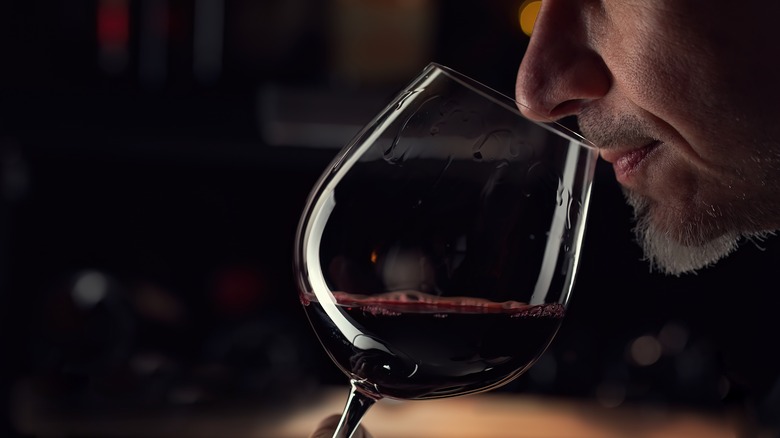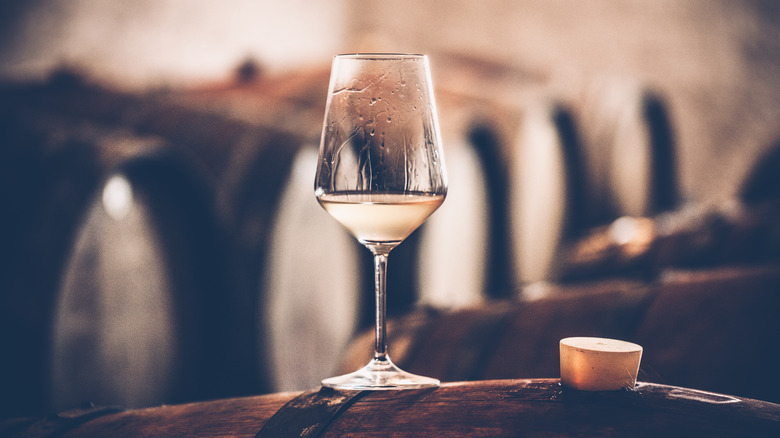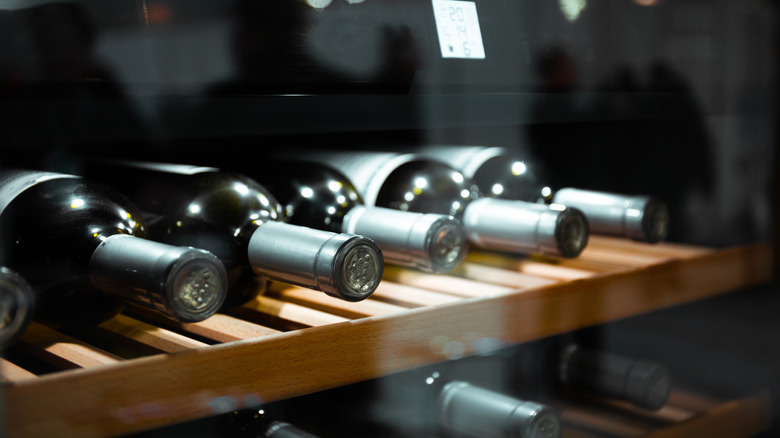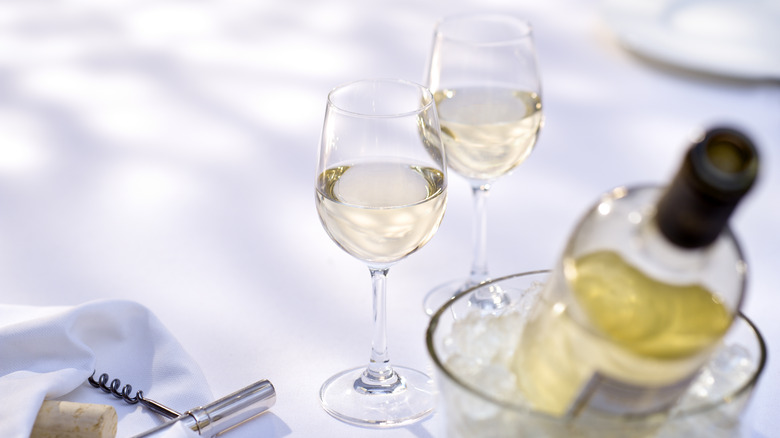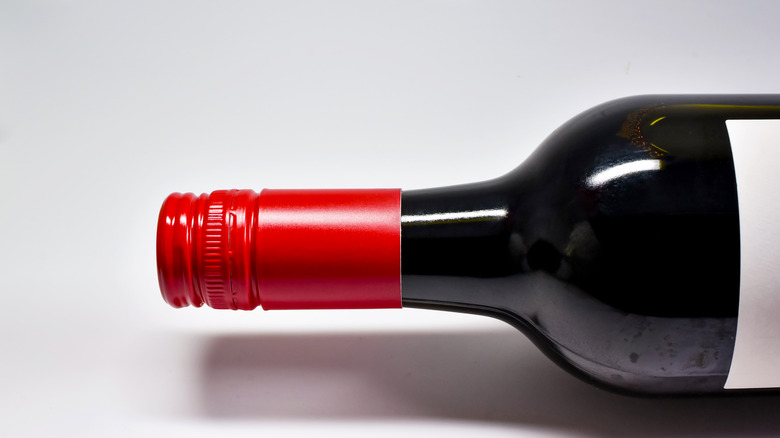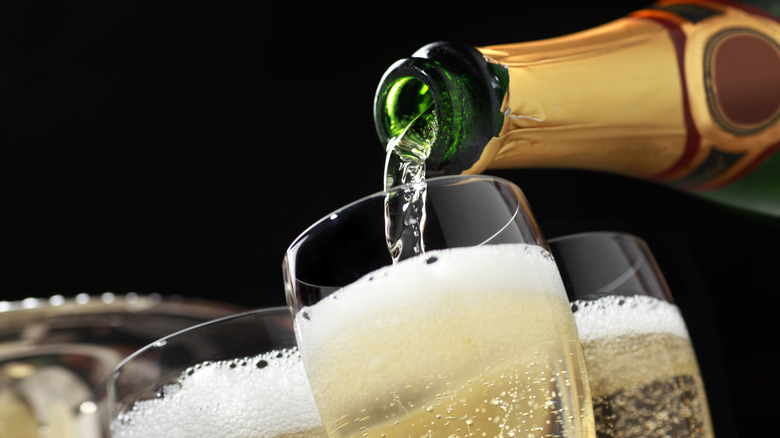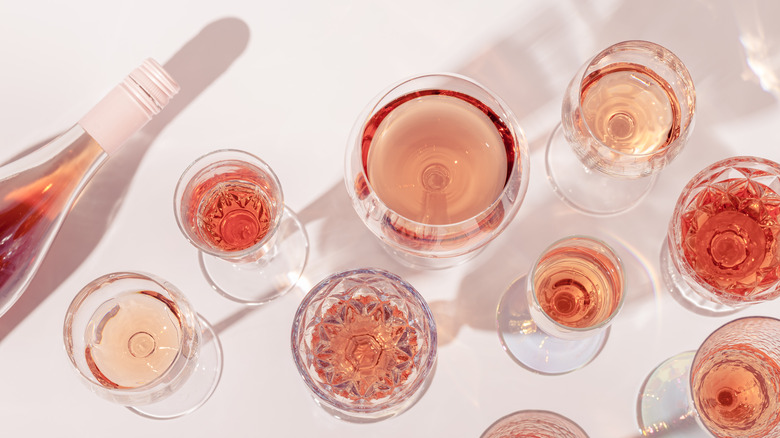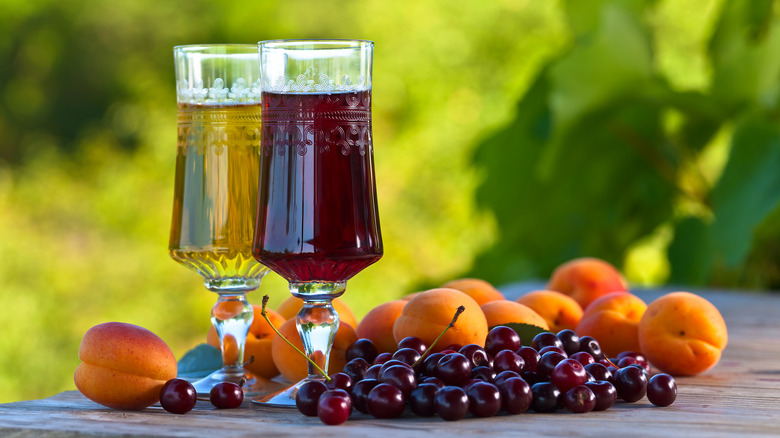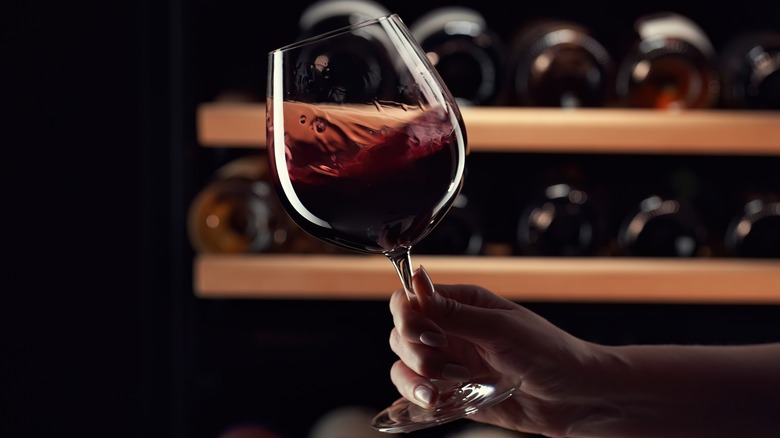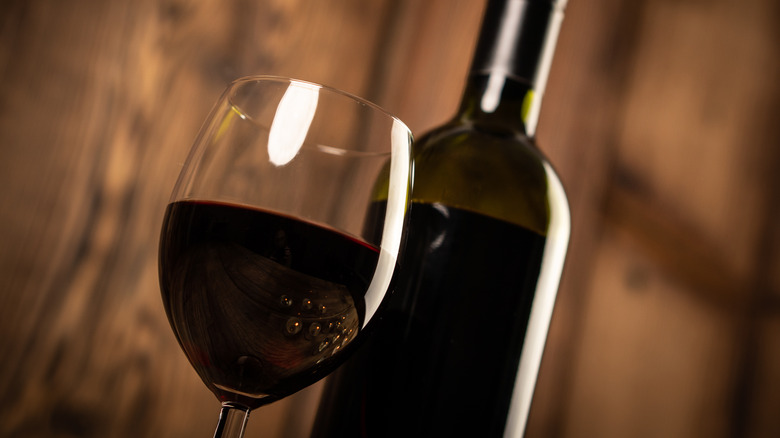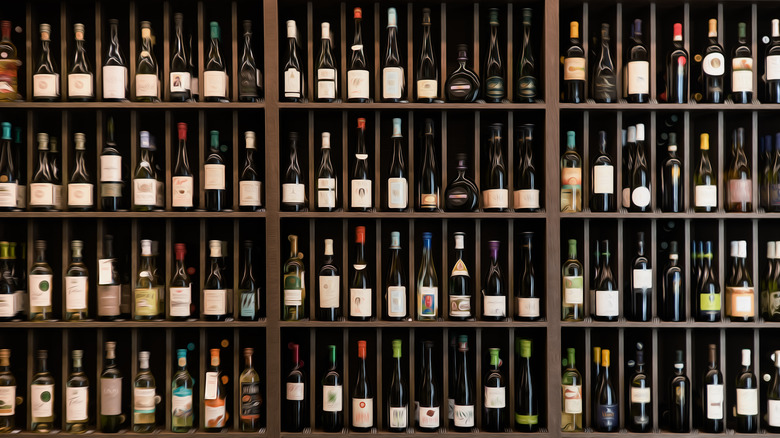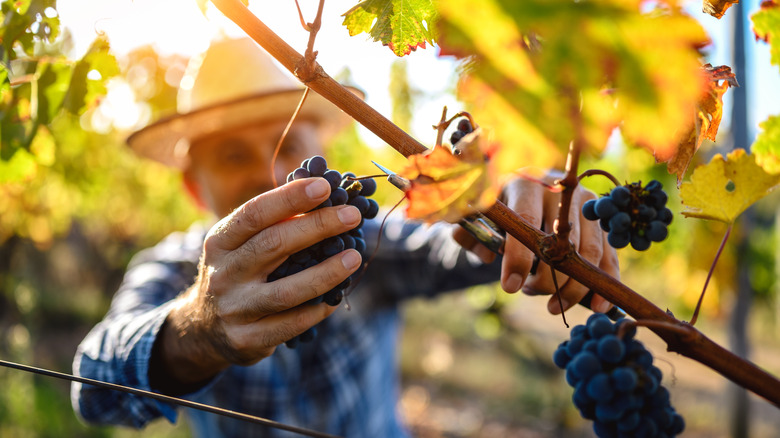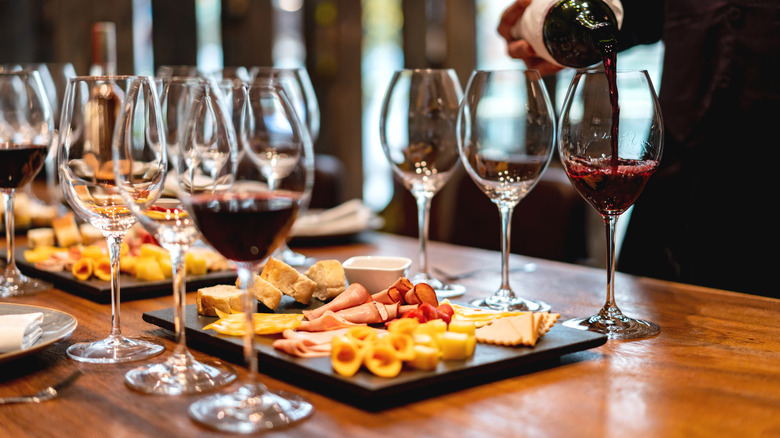15 Myths You Should Stop Believing About Wine
According to archaeological evidence, human beings have been fermenting grapes to make wine for almost 8,000 years. Many forms of wine have sprung up throughout history — it's a drink enjoyed in nearly every corner of the world.
But a number of myths about wine have also appeared over time — and while they're all harmless, these fallacies could be standing between you and the next stage of your wine-appreciation journey. Some of the misconceptions put people off trying particular types of wine, convince them they don't like a style because it was served incorrectly, or make them miss out on delicious, unique food pairings.
Fortunately, we've managed to debunk some of the worst offenders — wine myths that just won't go away. Understanding more about the nature of wine and how it's made will open up a new world of possibilities the next time you're pondering over which bottle to pick.
Expensive wines are always higher quality
There's no denying the correlation between higher-quality wine and steeper price tags, but it's not accurate to say a bottle that costs more will definitely taste better. The reality is more nuanced, and there are a number of factors that go into how much a bottle of wine costs.
First, we have to consider the cost of the raw ingredients, labor, production, and packaging, which can all vary depending on where the wine is made. Next, wineries spend money on branding and marketing, and will either have to factor in distribution costs or give a separate distributor a cut of the profits. Some wine-making processes also increase production costs; for example, oak-aging wine can increase the price per bottle by a few dollars.
While there is a price point where wine will jump up in quality — after about $20 — it's more important to start factoring in personal taste. In fact, you might find a wine you love that costs far less than that, especially if you live somewhere with local options. Lastly, remember that some wine simply costs more because it's a rare vintage or has historical significance – which doesn't guarantee quality — or because the vineyard knows by pricing a wine higher, our perceived value of it increases and they can make more money.
The older the wine, the better it tastes
There's a common misconception that aging a wine automatically increases its quality, likely because when we hear about bottles of wine selling for astronomical amounts of money, they're normally very old. However, as we've already mentioned, this is more likely due to the bottle's rarity than a guarantee of excellence.
Aging a wine certainly changes it, but it's better to think of age as a flavor — something that can just as easily improve a drink as it can ruin it. In younger wines, we normally taste the primary characteristics of the grapes, but over time, the acids, sugars, and alcohol in the wine continue to react in ways that might expose secondary flavors. Some of these flavors are desirable, others not so much.
How the wine is aged is also important, as the incorrect environment can encourage reactions over time that will have a negative impact on quality. If a wine is stored somewhere that's too hot, for example, chemical reactions will speed up and some of the fruit flavors will end up tasting "cooked." It also has to be stored somewhere dark, because ultraviolet light can make wine spoil faster. This is why wine is traditionally stored in cellars — cool places with minimal light.
Red wine should be served at room temperature
We traditionally think of white wines being served chilled, and reds being allowed to come up to room temperature before pouring. This is broadly correct, as white wines have a more noticeable acidity that's balanced out when the liquid is colder, whereas red wines are generally more fruit-driven, and a higher temperature makes it easier for us to taste these flavors.
If anything, red wine should be served slightly below room temperature — between 62 degrees Fahrenheit and 68 degrees Fahrenheit – which helps reduce the heat of the alcohol to let more complex flavors shine through. Having said that, some red wines are served even cooler, specifically more delicate styles. Sweeter, floral Pinot Noirs, like those from California, and certain Italian reds are excellent when chilled, pairing perfectly with lighter summer foods.
Arguably the most well-known red wine that's served cool is the French Beaujolais. High in acidity but low in mouth-drying tannins, these elegant, fruity wines benefit from being poured at a lower temperature by popping them in the fridge for around 20 minutes before serving.
White wine has to be served extra cold
It's true that white wines usually benefit from being served chilled, thanks to their more prominent acidity and a lighter profile that can make the taste of alcohol more pronounced. The more you cool a wine, the more of its bouquet and aromas are masked, and the more faults are covered up.
Now, if you're drinking a particularly poor quality wine, serving it extra cold might make it more palatable, but it won't do for wines of a reasonable standard. White wine should normally be served chilled but above 49 degrees Fahrenheit to preserve the aroma and taste, meaning you should allow it a little time to come up to the correct temperature once you've taken it out of the refrigerator. This also means that serving white wine in an ice bucket is a no-no, as it will eventually get too cold.
It's also worth mentioning that some white wines benefit from being served at warmer temperatures, closer to that of reds. Specifically, you should get more flavor out of full-bodied, oakier white wines if you try them at a slightly higher temperature.
Corked wine refers to bits of cork floating in the bottle
When you order a bottle of wine at a restaurant and the server pours a small amount for you to test, they're not actually wondering whether you generally like the taste. The initial sample is to let you check whether the wine is "corked;" however, what this means is often misunderstood.
Contrary to popular belief, if a wine is corked it doesn't mean that there are pieces of the cork floating in it. Sure, this happens occasionally, especially if the cork has hardened over time and the corkscrew pushes flakes down into the liquid, but bits of cork won't actually affect the wine. Corked wine refers to wine that has been contaminated by a chemical compound called TCA — short for trichloroanisole. TCA is produced by a mold that can contaminate cork or wood, so there are a few different ways it can find its way into a wine bottle.
To check if a wine is corked, first, give the glass a swirl and take a good sniff – if TCA is present, you should detect unpleasant moldy aromas like damp earth, soggy cardboard, or even wet dog. Even if the wine smells fine, make sure to take a sip to double-check, as corked wine isn't always identifiable by smell alone.
Screw caps indicate lower-quality wine
Despite screw caps on wine bottles becoming increasingly popular, there's still a common perception that they denote a cheaper or lower quality wine, while premium bottles exclusively use cork. While it's true that low-cost bottles are more likely to come with a screw cap, cork snobs are missing out on some truly fabulous wines.
There are many reasons why winemakers have replaced corks with screw caps, not least because they strongly reduce the chance of the wine becoming corked. While natural cork is recyclable and biodegradable, it's still a limited resource that can be lost through increased demand.
Another common argument for using cork is that it allows the wine to "breathe," but the truth is that the breathability of corks varies, and some modern screw caps have been designed to let a consistent amount of oxygen into every bottle without causing it to oxidize. So, if you're hunting for a great-tasting wine and have a habit of only picking wines with a cork, it's definitely worth branching out and giving screw caps a chance.
Champagne and sparkling wine are the same thing
For many, champagne is just another name for sparkling wine, perhaps used to refer to fancier and more expensive bottles. However, that couldn't be further from the truth.
For a wine to be called champagne, it has to follow a strict set of regulations set by an official champagne trade body. These include rules around how the wine is produced, which grapes are used, and — perhaps most importantly — where the wine is made. Champagne is produced exclusively in the Champagne region of France, so anything made outside of this area can't legally be labeled "champagne."
Despite champagne's well-deserved reputation for quality, there are still a number of other sparkling wines worth exploring, especially as they usually carry a lower price tag. Italian prosecco has some brilliant varieties and can be a touch sweeter, but it's generally cheaper than champagne as it requires a less costly production method. On the other hand, Spanish Cava is made similarly to champagne, so it's closer in taste, but its lower profile means it's much more affordable.
All rosé wines are sweet
Perhaps it's the vibrant candy-like color, but it's a common assumption that all rosé wines are sweet. While they can be, some rosés are dry as a bone, while others fall somewhere in between.
The perceived sweetness of wine is down to a few factors — sometimes there's residual sugar left over from fermentation, but tannins, acids, and alcohol can all play a part in the final taste. Rosé is technically a type of red wine in the sense that the grape skins are fermented along with the juice, except there's less skin contact with the skins overall which results in the light pink hue.
Nothing about this process specifically means rosé will turn out sweeter than red or white wines, and there are plenty of types to choose from at both ends of the spectrum. For example, in France, the Loire Valley is known for its fruity, sweet rosés, whereas the Provence region is responsible for producing some of the crispest dry varieties around.
Sweet wines are only for dessert
Many people assume that just because a wine is sweet, it should be reserved for pairing with dessert, the sweet treat at the end of a meal. The thinking is that flavors should be paired like-for-like, but you can probably think of plenty of dishes that work precisely because the ingredients have juxtaposing tastes.
Sweet wine is no different, and you're missing out if you reserve it for the final course. Sweeter wines with high acidity like a Riesling can pair fantastically with spicy Indian or Thai food to take the edge off the heat or stand up to vinegary sauces, while a chilled Gewürztraminer can complement sweet glazes or contrast wonderfully against saltier dishes.
Even mead — a honey wine — can be enjoyed alongside savory dishes, particularly salty pork dishes, and sweet wines can be used to great effect in cooking. For those that usually avoid sweet wines, picking the right food pairing might just open up a world of possibilities for unique flavor combinations that dry wines can't match.
Higher alcohol content means higher quality
As you've likely gathered by now, the quality of any wine isn't dependent on a single attribute. It's all about balance, and just as a wine can be too sweet, dry, or acidic, a wine can also be too boozy.
That doesn't mean wines that are more alcoholic are inherently bad — in fact, more alcohol can give a more full-bodied mouthfeel to the wine, while balancing out sweetness and acidity. However, if a wine is too strong, the taste of the ethanol will become more noticeable, overpowering other flavors.
If you've noticed a trend of wine getting stronger, there's actually a good reason for this. As world temperatures rise due to global warming, grapes are being exposed to higher levels of sunshine, meaning they produce more sugar and ripen faster. The amount of alcohol in wine depends on how much sugar is available for the yeast to ferment, so the extra sugar leads to stronger wines. While winemakers are adapting, it does mean the future of wine is changing, and not necessarily for the better.
Sulfites in red wine can give you a headache
While it's probably obvious that too much wine will give anyone a headache, some unfortunate souls claim it takes as little as one glass to cause them cranial discomfort, and it's normally red wine that gets the blame. Their usual reasoning is that it's the sulfites in red wine that are causing the headache, but this is fairly unlikely for a few reasons.
Sulfites are naturally occurring compounds that are a byproduct of fermentation, but they've been used as a preservative for a long time, and not exclusively in wine. As a result, most wines contain sulfites. It's true that some people can have a genuine anaphylactic allergic reaction to sulfites — although this is pretty rare — and while a higher number may have sulfite sensitivity, headaches aren't usually a symptom.
Almost all wines contain sulfites, and ironically, white wine usually contains more than red, so it doesn't make much sense to claim that sulfites are the cause of your headache. The truth is, there are a number of reasons red wine might be giving you a headache, and while you could be sensitive to sulfites, it could just as likely be sensitivity to the alcohol, or certain compounds in the grape skins that are missing from white wines.
Darker wines are more intense and flavorful
It's no secret that dark red wines are generally bolder, but this doesn't necessarily mean they have a better flavor than paler varieties. The hue of wine is dependent on a few different factors.
First, the type of grapes being used will have an impact on whether the wine is a deep, opaque red or whether it's lighter and possibly slightly translucent. For example, Cabernet Sauvignons normally fall into the former category whereas Pinot Noirs tend to sit in the latter — but it would be unfair to claim that a quality Pinot can't match a Cab Sav in terms of pronounced flavors. The age of the wine can also impact how dark it is, especially if it's been aged in oak, and while these will affect the taste, it doesn't guarantee it'll be more intense.
The color of red wine is also impacted by how long the juices are allowed to soak in the grape skins, seeds, and stems. The longer the contact time, the darker the wine will be, but it will also become more tannic, which isn't always a good thing depending on the wine and your personal preferences.
The bottle shape impacts the taste of the wine
Wine bottles come in many forms, and it's not uncommon for wines of the same style or grape varietal to share a bottle shape. It's not unfair to assume that there's a reason for this, but it's less to do with the taste of the wine and more to do with tradition and culture.
Apart from champagne bottles that are usually thicker to contain the pressure within, the shape of the bottle has no impact on the wine whatsoever. The most common types of wine bottles you'll see are the Burgundy style with a more bulbous bottom — usually used for medium-to-light-bodied wines — and the Bordeaux style — narrower with straight edges and generally containing a more full-bodied wine. The reason for this is simply that historically, these were the styles of wine those regions produced and the respective bottle types they used.
The tall, narrow bottles associated with Germanic wines, like Riesling, are known as Alsatian bottles, and even this design choice appears to have been down to economics more than anything. Narrower bottles meant you could pack them together more tightly when transporting them, meaning winemakers could transport them more efficiently (and safely) and increase their profits. There are some quirkier bottle shapes on the market, but this is usually just a branding choice and a way for winemakers' to make their product stand out from the crowd.
Organic wines are better for your health
There's a general assumption that if something's labeled "organic" then it's better for you, and while truly organic food and drink can be healthier than processed alternatives, it's not always guaranteed. Furthermore, regulation around the term "organic" can vary from place to place, so there's not a lot of consistency.
In the United States, it has to use 100% certified organic materials in order to claim the status, it can't be produced using synthetic fertilizers, and the maker can't add any more sulfites to those that are naturally produced during fermentation. It's worth noting that without added preservatives, organic wines spoil quicker, so you're more likely to accidentally consume a bad one if you're not careful. Regardless of any potential health benefits, it's important to look at the bigger picture.
Aside from the lack of worldwide regulation concerning the organic label, organic farming methods usually require more human labor — a drawback in wine-producing countries with reputations for poor workers' rights. They also tend to require more land for grape growing, and the more land used for agriculture, the less there is available for terrain that can sequester carbon. Ultimately, this means organic wines have a higher carbon footprint than non-organic ones.
The best wine pairings are always based on color
For anyone that's dabbled with wine pairings, one of the most common rules is that reds are for things like dark meats, barbecue, steaks, and cheese. Conversely, white wines are meant for lighter meats like seafood, chicken, and pork.
These are all perfectly valid food pairings, but the flavor profiles of these base ingredients can be changed dramatically based on how they're prepared, and some wines have characteristics that match food based on specific characteristics unrelated to their color. A lighter red, like Pinot Noir, can stand up to a weighty fish like salmon or mackerel, whereas high-acidity whites, like Riesling, can cut through the fattiness of a great steak.
If you want to be really bold, you can try matching the acidity of champagne with deliciously greasy fried chicken. Aside from the fun irony of pairing the two, the umami of the chicken pairs well with brioche yeastiness of the wine, and the effervescent mouthfeel complements the crunchy, deep-fried chicken skin.

